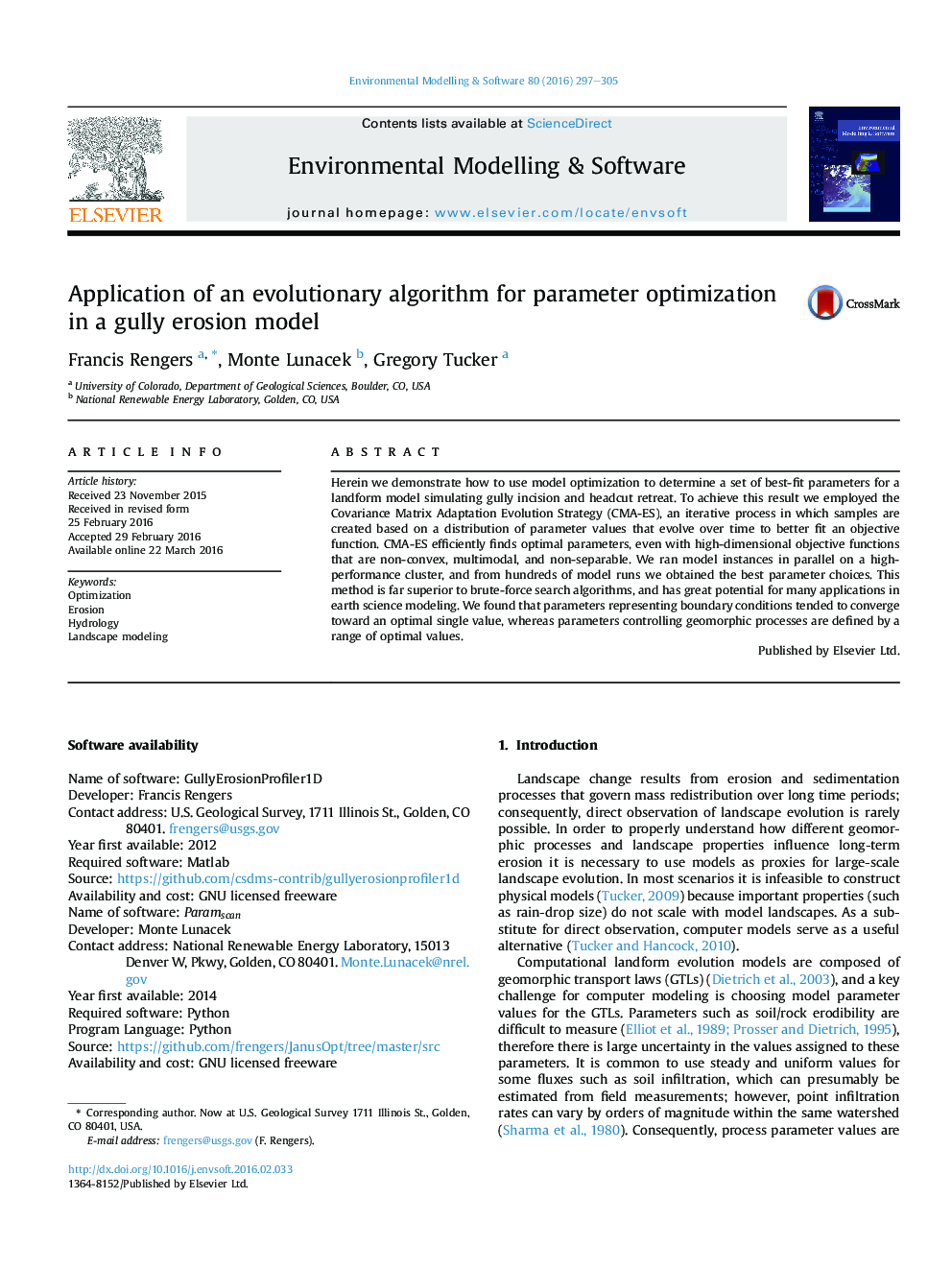| Article ID | Journal | Published Year | Pages | File Type |
|---|---|---|---|---|
| 6962548 | Environmental Modelling & Software | 2016 | 9 Pages |
Abstract
Herein we demonstrate how to use model optimization to determine a set of best-fit parameters for a landform model simulating gully incision and headcut retreat. To achieve this result we employed the Covariance Matrix Adaptation Evolution Strategy (CMA-ES), an iterative process in which samples are created based on a distribution of parameter values that evolve over time to better fit an objective function. CMA-ES efficiently finds optimal parameters, even with high-dimensional objective functions that are non-convex, multimodal, and non-separable. We ran model instances in parallel on a high-performance cluster, and from hundreds of model runs we obtained the best parameter choices. This method is far superior to brute-force search algorithms, and has great potential for many applications in earth science modeling. We found that parameters representing boundary conditions tended to converge toward an optimal single value, whereas parameters controlling geomorphic processes are defined by a range of optimal values.
Related Topics
Physical Sciences and Engineering
Computer Science
Software
Authors
Francis Rengers, Monte Lunacek, Gregory Tucker,
